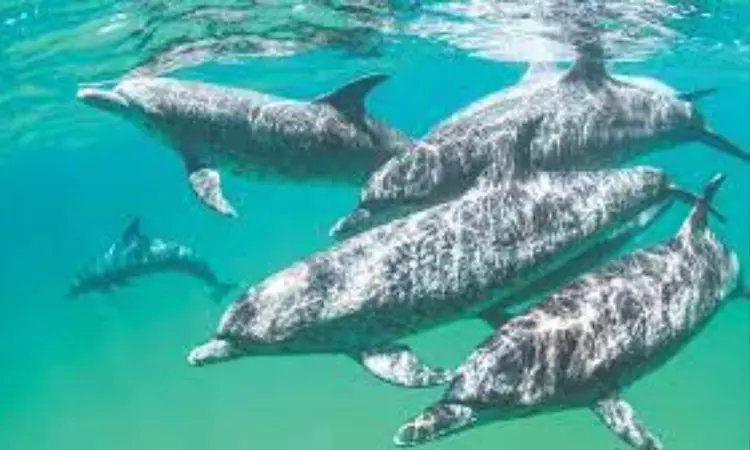Point of no return
Amazon river dolphins happen to be unique freshwater species that are only found in the rivers of South America, and are a handful of freshwater dolphin species left in the world.

Representative Image
UNITED STATES: The Anthropocene Epoch is throwing up natural calamities our way, one after another. A few days ago, it was reported that the carcasses of 120 river dolphins had been found floating on a tributary of the Amazon river.
Experts suspected that the dolphins met their end due to severe drought and heat. Low river levels during a drought had heated water in stretches to temperatures that were intolerable for the dolphins. More recently, thousands of fish have died on Amazon rivers due to a lack of oxygen in the water.
Sadly, the Amazon river dolphins happen to be unique freshwater species that are only found in the rivers of South America, and are a handful of freshwater dolphin species left in the world. Their populations are especially vulnerable to threats due to their slow reproductive cycles.
What has sent the scientific community into a tizzy is the fact that as many as 70 of the carcasses had surfaced when the temperature of Lake Tefe’s water had hit 39°C — over 10 degrees higher than the average for this time of the year.
These developments shouldn’t come as a surprise considering the number of warnings issued by ecologists the world over, who have been shocked at the accelerated pace of extinction of many species.
For instance, earlier this month, over 100 global experts had released the results of a study which said that 41% of amphibian species worldwide are threatened with extinction. The study attributes this danger to habitat loss and climate change, as confirmed by the IUCN Red List assessment.
The research tells us that between the years 2004 and 2022, a few major threats have taken over 300 amphibians a step closer to extinction. While climate change emerged as the primary threat for almost 40% of these species, habitat destruction and degradation hit 93% of all the amphibian species under threat.
To make things worse, 41% of all amphibian species that have been currently assessed are either globally threatened, or critically endangered. This figure also is the highest for any vertebrate group, when compared to 26.5% of mammals, 21.4% of reptiles and 12.9% of birds.
The study had taken into account the extinction risk of over 8,000 amphibian species globally, including 426 from India, of which 139 were found to be threatened.
The alarming rise in temperature is being acknowledged by agencies across the world. In the run-up to COP28, we are being greeted by some rather discomfiting statistics on the horizon.
The year that we are in — 2023, is well on its way to potentially turn into the warmest year in recorded history, with temperatures creeping up to 1.4°C above the pre-industrial era average.
It was just last month when global temperatures had touched a record high. The average surface air temperature was 16.38°C, which is 0.93°C greater than the September average recorded between 1991-2020.
Worryingly, for over 80 days this year, the global temperature was at least 1.5° C higher than pre-industrial levels. And this year has the dubious record for the highest number of such dog-days.
It might be convenient to wish away these reports with a shrug and say, “Not my circus, not my monkeys.” But indifference to the plights of the little creatures who share this planet with us, will exact a heavy toll on every species, including the ones at the top of the food chain. Don’t say you weren’t warned.



